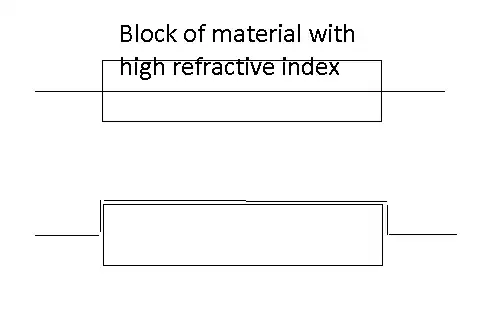Fermat's Principle is the statement that a ray will follow a minimum-time path between a point, A, to a point, B.
So, if I have a block of material of high refractive index, so that it slows the light considerably inside, the least-time path should avoid going through this block. In the picture below, in the topmost part a light ray going straight through the block is shown, in the bottommost the light ray goes around the object. Obviously, this situation does not occur and in reality, the ray goes straight through the block. Why does this not contradict Fermat's principle?
